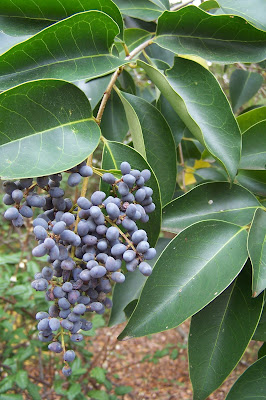Create a deer proof list and Providence will laugh. Go into their range and discover what survives.
Trout lilies, Christmas fern, ginger, hydrangea arborescens, aster, buckeye, cedar, oak, pine, & sourwood are few things thriving amongst a huge deer population near me.She's wanting a fruit orchard, above. Her wall will stop 'most' of the deer issues.
Trees too tall to reach are an obvious solution to deer issues, but the checkbook, typically, laughs. Plant the trees you love, at the size the checkbook allows, and use stakes with netting until it is a deer proof size.
Flowers are wine & canapes to deer. The best solution I've seen to keeping flowering shrubs? Fruit tree netting. Not perfect, but the shrubs survive & grow.
With deer, camellia, above, become trees not big bushes.
.
Neighborhoods with annuals at the entries, with heavy deer populations, use fruit tree netting. Deer may paw at them, but will eventually leave them alone.
.
Any plant on a deer proof list I assume to be deer bait. Young deer can't read your deer proof list, they learn by trying EVERYTHING.
.
Some gardeners have success with Milorganite around their plantings. It must be reapplied and some who've used say it was no use.
.
Deer proof? Walk woodlands nearby. Like the short list of choices? I don't. Like everything on the list of choices? Well, yes. It's that or nothing. The worst thing is to buy, plant and the deer have a feast. You're out time, labor, money. Money can be earned. Time can be reclaimed by no one.
.
Garden & Be Well, XO Tara
.
Garden Designers Roundtable: More Voices About Deer In The Landscape
http://gdrt.wordpress.com/2011/12/13/gardening-with-deer/
Gardening with Deer
December 13, 2011 by Scott Hokunson





1 comment:
It's true... Deer have different tastes, just as we do.
When there's less deer, they are pickier. When there's more deer, they get desperate, and very little is safe.
To give a deer resistant plants presentation requires gardening in a variety of neighborhoods... or talking to landscape gardeners... the people that actually are the boots on the ground...
For the most part, toxic or poisonous is safe... But there are deer that even cross that line.
I've ripped out entire deer buffets, and planted things they didn't eat, only to see even some of the bullet-proof plants eaten at certain times of the year, when their leaves became palatable...
Post a Comment